#phylogenetics
Explore tagged Tumblr posts
Text
Below the poll is a series of animal images labeled A through J. A is the least close to the birds we have today; J is the closest. If you encountered these animals in the wild, which would you call birds? If you pick a higher up option, then that means you consider all the below ones birds as well - so if you pick A, then BCDEFGHIJ are all birds. If you pick J, only J is a bird.
A:

B:
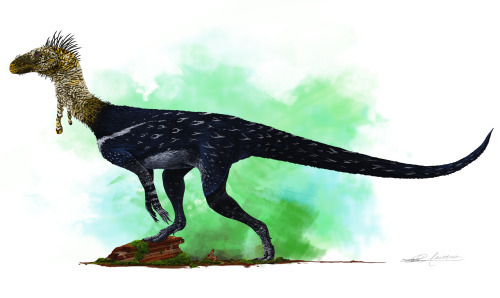
C:
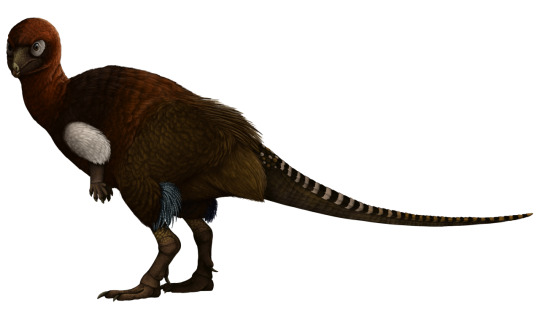
D:

E:
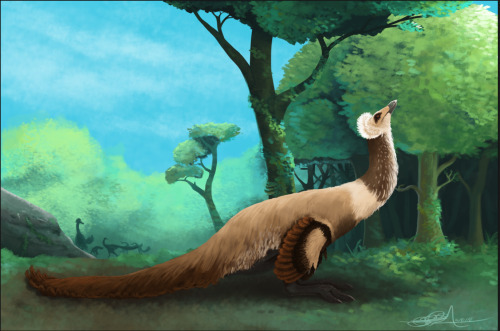
F:
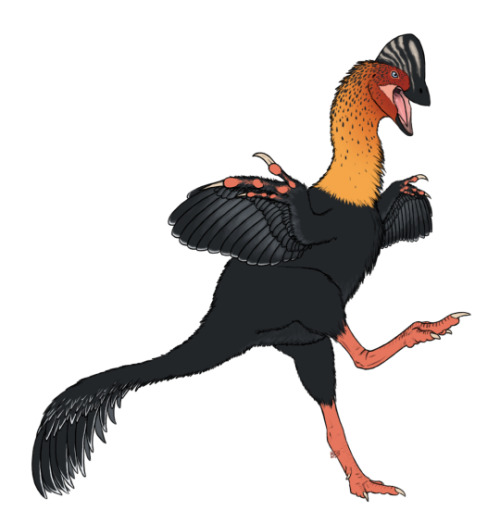
G:

H:
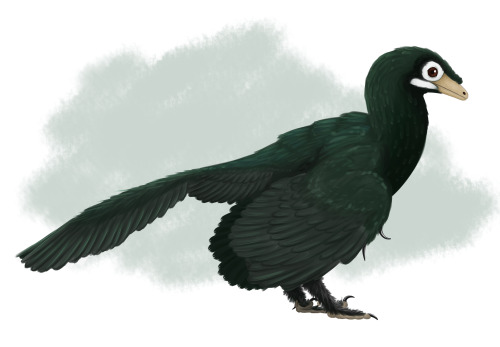
I:
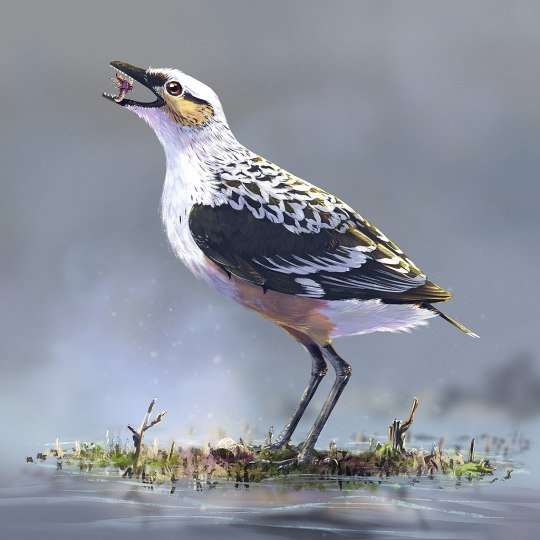
J:
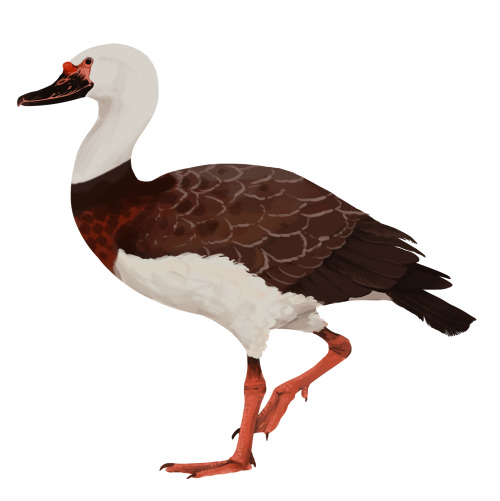
PLEASE REBLOG THIS SO IT CAN LEAVE PALAEOBLR. I NEED PEOPLE WHO DON'T RECOGNIZE THESE ANIMALS ON SIGHT TO VOTE.
I apologize to all of y'all with vision impairments for whom this poll is inaccessible. Alas, this is an experiment, and I cannot name the taxa. Thank you.
All alt text includes artist attribution; I did not make these pictures myself.
#palaeoblr#dinosaurs#birds#pterosaurs#prehistoric life#WHAT ARE BIRDS#bird political spectrum#taxonomy#classification#cladistics#phylogenetics
19K notes
·
View notes
Text

There's a maximum likelihood that I'm doing phylogenetics wrong.
Geometriphylogenetics [Explained]
Transcript
[A tree diagram, or a dendrogram is shown, consisting of lines that branch off from left to right, starting with one horizontal line on the left. Eight results are shown on the right: ellipse on Path 1, circle on Path 2, triangle on Path 3, parallelogram on Path 4, trapezoid on Path 5, square on Path 6, rectangle on Path 7, and a pentagon on Path 8. The paths are listed in order top to bottom.] [Path 3 and the triangle are bold black, while the other branches are dimmer. The paths are connected as follows: Path 2 and 3 are connected, then both connect together to Path 1; Path 4 and 5 are connected, as are Path 6 and 7, and these two paths are connected altogether; Path 8 is then connected to the branch containing Paths 4 to 7. All of Paths 1 to 3 are then connected to Paths 4 to 8, the branches all culminating in a single line on the left.] [Caption below the panel:] The phylogenetic revolution continues: Triangles were long believed to be related to squares, but genetic analysis proves that they are actually very pointy circles.
950 notes
·
View notes
Text










What mammal groups do you classify fanged beasts as?
There’s too many options with descriptions too long to fit on a 12 answer poll so you’ll have to comment your answer on this one, sorry.
#monster hunter#monsterhunter#monhun#monster hunter biology#speculative biology#speculative evolution#fanged beast#congalala#blagonga#gammoth#doshaguma#arzuros#goss harag#lagombi#volvidon#bishaten#kecha wacha#phylogeny#phylogenetics#taxonomy#cladistics
63 notes
·
View notes
Text
Worms evolved relatively recently, in fact 90% of annelid species came into existence in the last 25 million years. The closest living relatives to worms are in fact lampreys.
59 notes
·
View notes
Text
Some Phylogenetics Vocabulary
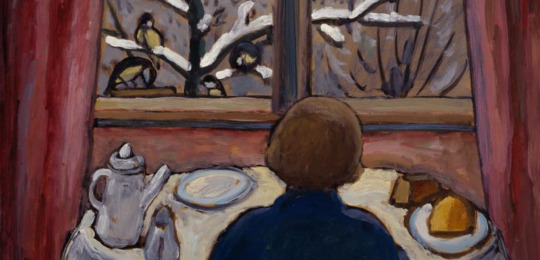
for your next poem/story
Phylogenetics—Field of biology that deals with the relationships between organisms. It includes the discovery of these relationships, and the study of the causes behind this pattern.
Additive tree - A phylogenetic tree in which the distance between any two points is the sum of the lengths of the branches along the path connecting two points.
Anagensis - Evolutionary change along an unbranching lineage; change without speciation.
Coalescence - The evolutionary process viewed backward through time, so that allelic diversity is traced back through mutations to ancestral alleles. Coalescent theory can be used to make predictions about effective population sizes, ages and frequencies of alleles, selection, rates of mutation, or time to common ancestry of a set of alleles.
Ontogeny - The growth of an organism through all its developmental stages (embryonic stage through death).
Plesiomorphy - An ancestral character state.
Punctuated equilibrium - A model of evolution in which change occurs in relatively rapid bursts, followed by longer periods of stasis.
Stasis - A period of little or no discernible change in a lineage.
Symplesiomorphy - A shared ancestral character state.
Unrooted tree - A phylogenetic tree that is not directed with respect to time.
Vicariance - Speciation which occurs as a result of the separation and subsequent isolation of portions of an original population.
Sources: 1 2 3 ⚜ More: Word Lists
#phylogenetics#terminology#word list#writing reference#writing inspiration#writeblr#spilled ink#dark academia#literature#writers on tumblr#studyblr#langblr#linguistics#writing prompt#poetry#poets on tumblr#creative writing#writing ideas#writing inspo#gabriele munter#writing resources
40 notes
·
View notes
Text

Insecta phylogenetic tree WIP
#very excited about this#i am gonna redraw a few of the insects#but so far i'm pretty happy with it#insects#insecta#phylogeny#phylogenetics#bugs#bug art#insect art#art wip#current wip#my wips
10 notes
·
View notes
Text
I'm so mad.
I was looking into tyrannosaur family trees, as one does, and was all like, hey, Tyrannosaurus and Tarbosaurus are considered sister taxons despite being on opposite sides of the world, what gives? How have we all missed this crucial fact!
I was thinking about it the past few days, and decided to make a passion project where I remade the tyrannosaur family tree with more intake from geography and what biology we had. Today I started it and was looking into papers, and then I remembered something. Beringia. The landmass that was once in place of the Bering Strait. It wasn't just open for migrations during the human migrations, but also in the Cretaceous period.
My passion project was ruined because I forgot about thE BERING STRAIT HBJGVHJHGVFHJHKCS
#tyrannosaurus rex#tyrannosaurus#tyrannosauroidea#tyrannosaurid#tyrannosaurs#tarbosaurus#tarbosaurus bataar#tyrannosaurus mcraeensis#phylogeny#phylogenetic trees#phylogenetic tree#phylogenetics#cladograms#cladogram#science#earth science#earth sciences#paleontology#paleontologist#aspiring paleontologist#this is why I will never be a paleontologist like I want to be#I'm so dumb#dumbass#dumbass scientist
9 notes
·
View notes
Text

Me after studying taxonomy for four years
#taxonomy#cladistics#classification#phylogenetics#species#species concepts#evolutionary biology#evolution#science#memes
20 notes
·
View notes
Text
The Best way to start a Conversation has to be 'Phylogenetically speaking...'
10 notes
·
View notes
Text
Fun fact! Although Knuckles the Echidna is closer to Sonic the Hedgehog socially, genetically he has more in common with Perry the Platypus.
6 notes
·
View notes
Text
Do you guys remember the guy from my calc class who preys on my downfall every night? Well, another thing about him is that he enjoys when I tell him how various animals are related (my special interest is knowing how every animal is related to every other animal). He will tell me the names of two animals and enjoy when I know the clade they both share.
HOWEVER, he absolutely DETESTS when I mention the fact that sponges are the most basal animal. If he lists a type of sponge as one of the animals, he will get incredibly pissed off when I say that sponges and whatever-the-other-animal-is are only related by both being animals (kingdom, animalia).
He tells me that this is "cheating", but, dude, I can't change the phylogeny of sponges!
2 notes
·
View notes
Text
Idk who "mrbeast" is in the slightest all I know is every time someone brings him up I briefly go "wait why are people talking about a bayesian inference phylogenetics program on tumblr" before I remember that it's mrBAYES, and that's not what people are talking about

#bayesian phylogeny#bayes#mrbayes#mrbeast#loving my “Idk I'm an adult” era of ignorance rn#phylogenetics
152 notes
·
View notes
Text

i had to share this convo i had with a friend from undergrad
absolutely incomprehensible drivel. i love biology.
(CONTEXT: we were both entomology majors together and i'm currently creating slides for a guest lecture on arthropod systematics. arachnids are a notoriously controversial group because scientists can't agree on whether horseshoe crabs get to be in the club or not. i was reading an absolute taxonomic smackdown of a paper and had to share)
TL;DR nerd shit
#arachnids#taxonomy#phylogeny#biology#phylogenetics#arthropods#invertebrates#entomology#but more like#arachnology#nomenclature#nerd shit#mine
13 notes
·
View notes
Text










What animal groups do you classify leviathans as?
There’s too many options with descriptions too long to fit on a 12 answer poll so you’ll have to comment your answer on this one, sorry.
#monster hunter#monsterhunter#monhun#speculative biology#speculative evolution#cladistics#taxonomy#phylogenetics#phylogeny#monster hunter biology#leviathans#lagiacrus#agnaktor#balahara#royal ludroth#gobul#nibelsnarf#mizutsune#almudron#somnacanth#uth duna
63 notes
·
View notes
Link
uDance, a novel method that builds highly accurate and scalable phylogenetic trees using the divide and conquer approach, has been devised jointly by scientists from the University of California, San Diego, and Arizona State University. Phylogenetic trees are like family trees for all living organisms that help us comprehend how different species are related to each other through evolution. The previous methods presented the drawbacks related to inaccuracy and inefficiency in handling large numbers of organisms. uDance, however, refines different parts of a phylogenetic tree independently and can also build off existing trees. Scientists implemented uDance and successfully generated a tree for around 2,00,00 genomes using 387 marker genes and a huge amount of amino acid data with enhanced accuracy and scalability.
The vast array of species on our planet translates into a large quantity of genetic material to investigate. There exist two methods, one emphasizing numerous genes and fewer organisms, and another focusing on a smaller number of organisms and more genes. The objective is to accumulate a plentiful supply of genes as well as numerous living organisms.
To achieve this goal, scientist Siavash Mirabab and his team have come up with uDance. The divide and conquer strategy employed by uDance breaks down the task into smaller parts and then merges them to build the family tree. This approach not only allows for efficient analysis of a massive amount of genetic data but also enables the updating of the tree as more and more data becomes available.
uDance was successful in creating a family tree for over 1,99,000 organisms using 387 marker genes while being computationally efficient which is a substantial improvement compared to previous methods.
Continue Reading
25 notes
·
View notes
Text
Put your reasoning in the notes, I want to hear exactly what hill you're gonna die on
#my bs#my friend and i have been having an extensive discussion on this point#i say bird#he says mammal#poll#polls#tumblr#tumblr polls#mythology#myth#mythical creature#horse#pegasus#winged horse#biology#science#phylogeny#phylogenetics#evolution#genetics#bird#mammal
32 notes
·
View notes